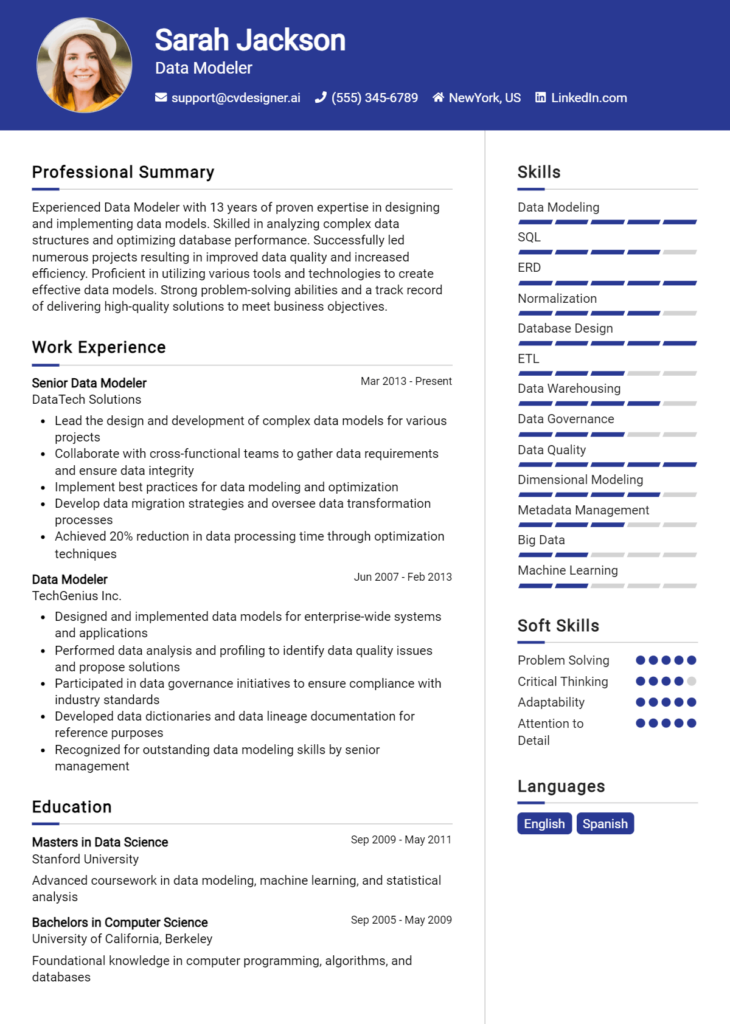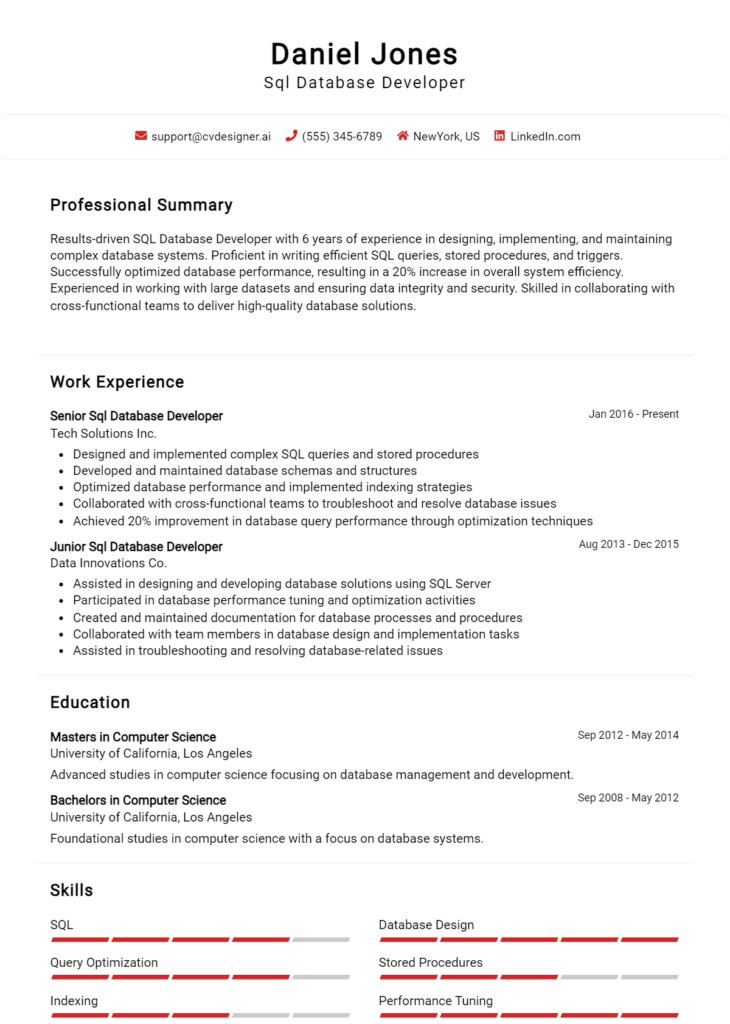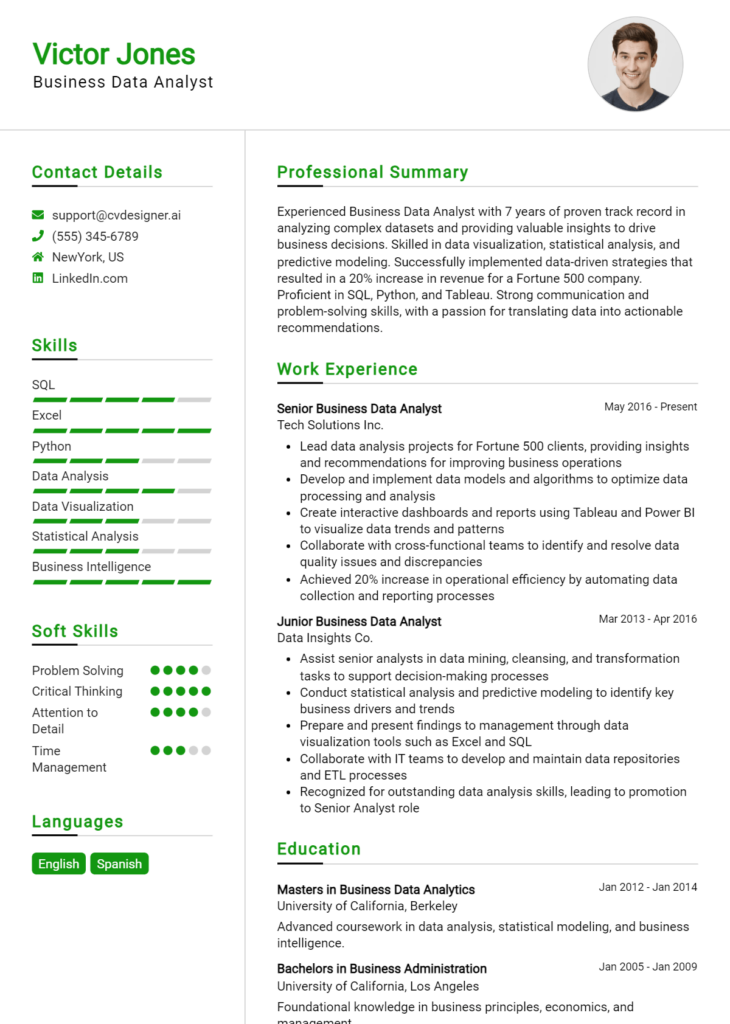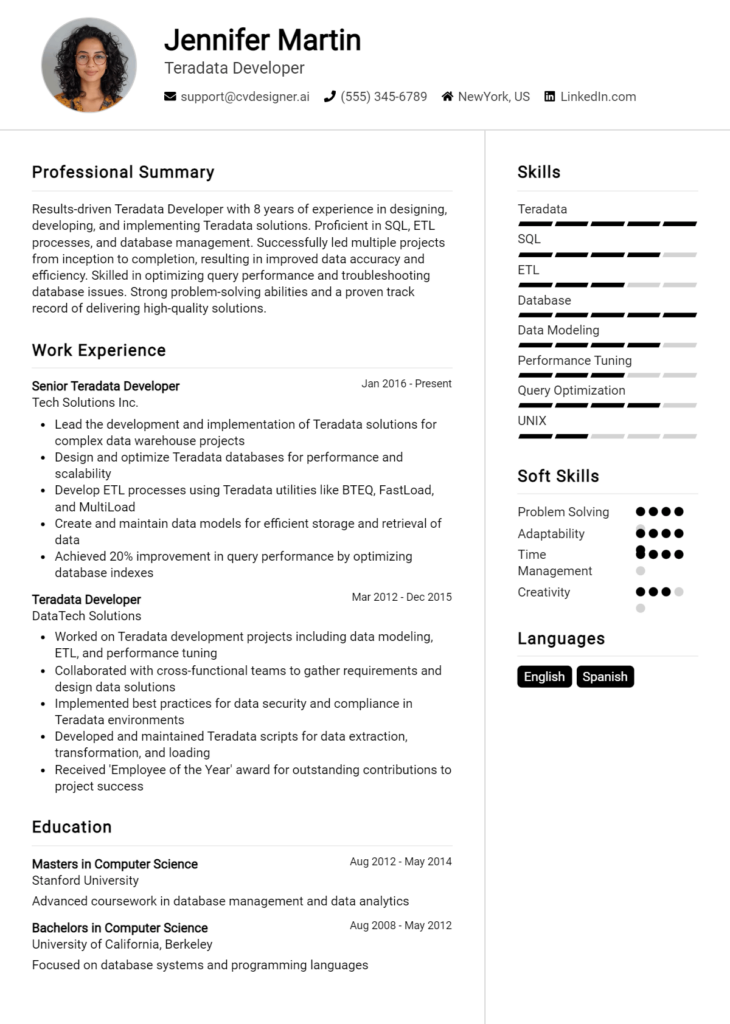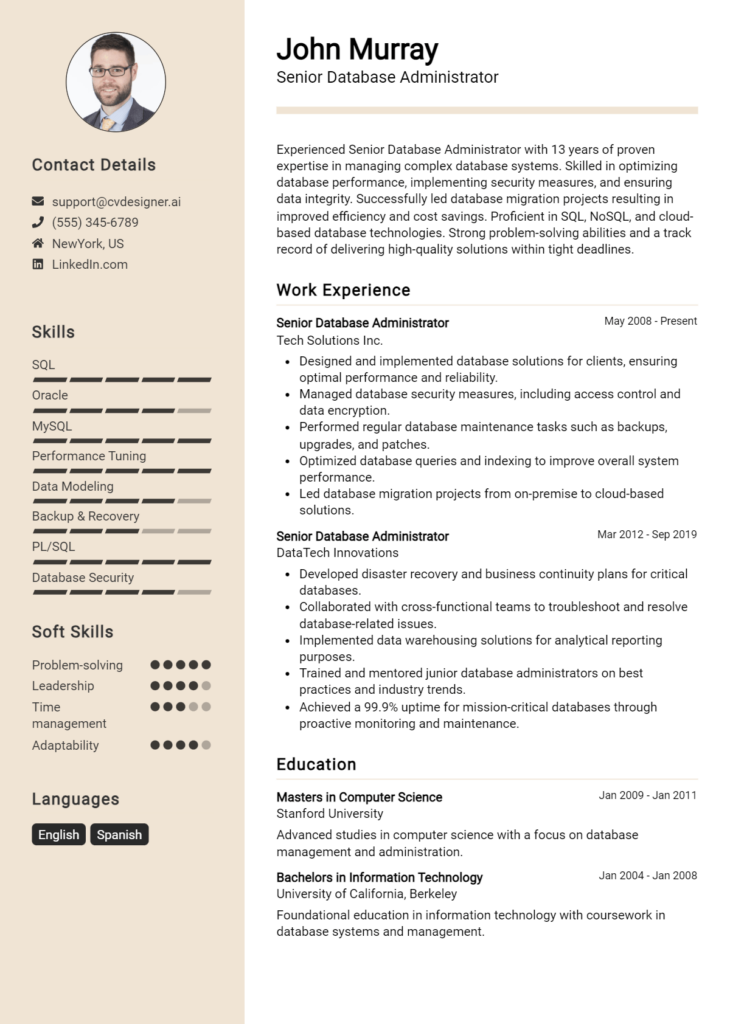Most Popular Data Analyst Resume Examples
Explore additional Data Analyst resume samples and guides and see what works for your level of experience or role.
As the backbone of data-driven decision-making, the role of a Data Analyst is both pivotal and dynamic. In a world where data reigns supreme, your ability to transform raw numbers into actionable insights can set you apart in the job market. However, even the most skilled Data Analysts can struggle to land interviews without a well-crafted resume that effectively showcases their skills and experiences. This article is designed to guide you through the intricacies of writing a compelling Data Analyst resume, complete with examples tailored for various experience levels.
We'll delve into key responsibilities and essential skills that hiring managers look for, ensuring you can highlight your expertise. You’ll learn about the best resume formats to enhance readability and impact, as well as common mistakes to avoid that could hinder your chances of making a great first impression. Additionally, we’ll provide you with resume examples for entry-level, mid-career, and experienced Data Analysts, along with actionable tips on resume writing and guidance on selecting the right resume templates. By the end of this guide, you'll be equipped with the knowledge to create a standout resume that captures your unique value as a Data Analyst.
Key Responsibilities and Skills for a Data Analyst
As a Data Analyst, your primary responsibilities revolve around interpreting data and transforming it into actionable insights that can drive business decisions. You'll be tasked with collecting, processing, and analyzing large datasets to identify trends, patterns, and anomalies. This role requires a keen eye for detail and a strong understanding of statistical methods and data visualization techniques.
Key responsibilities include:
- Data Collection: Gathering data from various sources, ensuring its accuracy and completeness.
- Data Cleaning: Identifying and rectifying errors or inconsistencies in datasets.
- Data Analysis: Utilizing statistical techniques to analyze data and generate useful business insights.
- Reporting: Creating visualizations and reports to present findings to stakeholders.
- Collaboration: Working closely with other teams to understand their data needs and provide analytical support.
- Continuous Improvement: Staying updated with new analytical techniques and tools to enhance data analysis capabilities.
Essential skills required for a Data Analyst position:
- Proficiency in data analysis tools (e.g., SQL, Excel, R, Python)
- Strong analytical and problem-solving skills
- Knowledge of statistical methods and data visualization techniques
- Excellent communication skills for conveying complex data insights to non-technical stakeholders
- Attention to detail and accuracy in data handling
- Familiarity with data management and database systems
- Ability to work collaboratively in a team environment
Highlighting these skills effectively in your resume skills section can significantly improve your chances of getting noticed by potential employers. It’s crucial to tailor your listed responsibilities and skills to align with the specific job description you are applying for, as this demonstrates your relevance and suitability for the role. Furthermore, consider how these skills can be emphasized in your CV, showcasing your qualifications and experiences in a manner that resonates with hiring managers.
Best Resume Format and Structure for a Data Analyst
When crafting a resume for a Data Analyst position, choosing the right format and structure is crucial for effectively showcasing your skills and experiences. Here’s a detailed guide on how to create an impactful resume that stands out to potential employers.
Contact Information
Start your resume with your contact information placed at the top. This section should include:
- Full Name
- Phone Number
- Email Address
- LinkedIn Profile (optional, but recommended)
- Location (City, State)
Ensure that your email address is professional and that your LinkedIn profile is updated to reflect your latest experiences and skills.
Professional Summary
Next, include a professional summary that highlights your key qualifications and career objectives. This section should be concise, typically 2-4 sentences long, and should encapsulate:
- Your years of experience in data analysis
- Key industry expertise (e.g., finance, healthcare, marketing)
- Technical skills and tools you are proficient in (e.g., SQL, Python, Excel)
- Your career goals and what you hope to achieve in your next role
Work Experience
The work experience section is one of the most critical parts of your resume. Here are some tips:
- List your work experiences in reverse chronological order (most recent job first).
- For each role, include the job title, company name, location, and dates of employment.
- Use bullet points to describe your responsibilities and achievements; focus on quantifiable results (e.g., "Improved data processing time by 20% through the implementation of a new reporting tool").
- Highlight relevant projects and tools used, demonstrating your hands-on experience with data analysis.
Education
Your education should also be listed in reverse chronological order. Include:
- Degree obtained (e.g., Bachelor’s in Data Science, Master’s in Statistics)
- Institution name
- Graduation date (or expected graduation date if still studying)
- Relevant coursework or honors (if applicable)
This section can be enhanced by including academic projects that relate to data analysis, showcasing your skills even if you lack extensive professional experience.
Skills
In the skills section, list both technical and soft skills that are relevant to the Data Analyst role. Be specific and include tools and technologies you are familiar with. For example:
- Technical Skills: SQL, R, Python, Tableau, Excel, Google Analytics
- Soft Skills: Analytical thinking, problem-solving, communication, collaboration
It’s beneficial to tailor this section to match the job description of the position you are applying for, ensuring you highlight the most relevant skills.
Certifications
If you have any relevant certifications, include a section for them. Common certifications for Data Analysts include:
- Google Data Analytics Certificate
- Microsoft Certified: Data Analyst Associate
- SAS Certified Data Scientist
- Tableau Desktop Specialist
Certifications can enhance your credibility and show your commitment to ongoing professional development.
Additional Sections (Optional)
Consider adding other sections based on your experience and the role you’re targeting:
- Projects: Highlight specific data analysis projects you have completed. Include your role in the project, tools/technologies used, and outcomes.
- Professional Affiliations: Memberships in relevant organizations can demonstrate your engagement with the data analysis community.
- Languages: If you speak multiple languages, include this section, as it can be an asset in diverse work environments.
Cover Letter Format Complement
The format of your resume can complement the corresponding cover letter format by maintaining a consistent style. Use the same font, color scheme, and header design for both documents to create a cohesive presentation. In your cover letter, reference specific achievements or projects from your resume to provide a narrative that ties together your skills and experiences, reinforcing your fit for the Data Analyst position.
By following this structured format and including relevant content, you can create a compelling resume that effectively highlights your qualifications as a Data Analyst, increasing your chances of landing an interview.
Writing Tips and Best Practices for a Data Analyst Resume
Crafting a compelling resume as a Data Analyst requires a strategic approach to highlight your analytical skills and accomplishments effectively. Start by tailoring your resume to the specific job description, ensuring that it reflects the qualifications the employer is seeking. Utilize action verbs to convey your contributions dynamically, and quantify your achievements wherever possible to demonstrate the impact of your work. Incorporating industry-specific keywords not only aligns your resume with the job requirements but also helps it pass through applicant tracking systems. Don’t forget to maintain a professional appearance by following resume writing tips, which can help enhance clarity and presentation. Additionally, consider how these practices apply when drafting a cover letter, as consistency across your application materials can create a powerful impression.
- Use strong action verbs (e.g., analyzed, developed, optimized) to start bullet points.
- Quantify your achievements (e.g., "increased efficiency by 20%," "analyzed datasets with over 1 million records").
- Tailor your resume for each job application by including relevant keywords from the job description.
- Highlight technical skills (e.g., SQL, Python, Tableau) prominently, as these are critical for a Data Analyst role.
- Include relevant educational qualifications and certifications (e.g., degree in Data Science, Certified Analytics Professional).
- Organize your resume with clear sections and a logical flow to make it easy to read.
- Keep your resume to one page if you have less than 10 years of experience and use concise language.
- Proofread your resume multiple times to eliminate any errors and ensure professionalism.
Common Mistakes to Avoid in a Data Analyst Resume
When crafting a resume as a Data Analyst, it's crucial to present your skills and experience in a clear and compelling manner. However, many candidates fall into common traps that can hinder their chances of landing an interview. By avoiding these pitfalls, you can create a resume that stands out and effectively showcases your qualifications. Here are some common mistakes to avoid:
- Overloading the resume with excessive information that can overwhelm the reader.
- Using generic descriptions that fail to highlight specific skills or achievements.
- Failing to tailor the resume for each job application, missing the opportunity to align with the job requirements.
- Ignoring the importance of formatting, leading to a cluttered and difficult-to-read document.
- Omitting relevant metrics or data to quantify your accomplishments, which can significantly strengthen your case.
- Including irrelevant experiences or skills that do not pertain to the Data Analyst role.
- Neglecting to proofread for grammatical errors and typos, which can undermine professionalism.
- Using jargon or overly technical language that may not be understandable to all hiring managers.
- Not including a summary or objective statement that succinctly conveys your career goals and value proposition.
- Overlooking the importance of including soft skills, which are essential for collaboration and communication in data analysis roles.
To ensure your resume is polished and effective, consider reviewing the common mistakes to avoid in a resume. Additionally, don't forget to pay attention to the common cover letter mistakes that should also be avoided, as a well-crafted cover letter complements your resume and can further enhance your candidacy.
Sample Data Analyst Resumes
A well-crafted resume is crucial for a Data Analyst, as it showcases not only your technical skills but also your ability to interpret data and provide actionable insights. Below are three sample resumes that cater to different experience levels and career paths in the field of data analysis. Whether you are an experienced professional, an entry-level candidate, or a career changer, these samples will help you structure your own resume effectively.
Experienced Data Analyst Resume Sample
John Doe
[City, State]
[Phone Number]
[Email Address]
Professional Summary
Detail-oriented and analytical Data Analyst with over 7 years of experience in leveraging data analytics tools to drive business solutions. Proven track record in transforming raw data into actionable insights, enhancing operational efficiency, and supporting strategic decision-making. Proficient in SQL, Python, R, and data visualization tools like Tableau.
Professional Experience
Senior Data Analyst
XYZ Corporation, City, State
March 2018 - Present
- Developed and maintained interactive dashboards to visualize key performance indicators, resulting in a 20% increase in reporting efficiency.
- Collaborated with cross-functional teams to identify data-driven strategies, leading to a 15% reduction in operational costs.
- Conducted advanced statistical analyses and A/B testing to optimize marketing campaigns, increasing conversion rates by 30%.
Data Analyst
ABC Solutions, City, State
June 2015 - February 2018
- Analyzed customer data to identify trends, leading to a successful redesign of the customer loyalty program.
- Automated data collection processes, reducing time spent on reporting by 40%.
- Provided insights to stakeholders through regular reports and presentations, enhancing data-driven decision-making.
Education
Bachelor of Science in Data Science
University of State, City, State
Graduated: May 2015
Technical Skills
- SQL, Python, R
- Tableau, Power BI
- Statistical Analysis, Machine Learning
- Data Cleaning and Preparation
Entry-Level Data Analyst Resume Sample
Jane Smith
[City, State]
[Phone Number]
[Email Address]
Professional Summary
Motivated and detail-oriented recent graduate with a Bachelor’s degree in Statistics and hands-on experience in data analysis through internships. Strong analytical skills combined with proficiency in Excel, SQL, and data visualization tools. Eager to contribute to a team-oriented environment and help drive data-informed decisions.
Education
Bachelor of Science in Statistics
University of City, City, State
Graduated: May 2023
Internship Experience
Data Analyst Intern
Data Insights Inc., City, State
June 2022 - August 2022
- Assisted in data collection and cleaning processes, ensuring data integrity for analysis.
- Developed basic reports using Excel and presented findings to senior analysts, supporting project initiatives.
- Collaborated on a team project to analyze customer feedback data, leading to actionable recommendations for product development.
Technical Skills
- Excel, SQL
- Python (basic knowledge)
- Data Visualization (Tableau Beginner)
- Statistical Analysis
Career Changer Data Analyst Resume Sample
Michael Johnson
[City, State]
[Phone Number]
[Email Address]
Professional Summary
Results-driven professional transitioning to a Data Analyst role with 5 years of experience in business operations. Skilled in analyzing and interpreting data to improve processes and drive efficiency. Completed a data analytics bootcamp, acquiring proficiency in SQL, Python, and data visualization tools.
Relevant Experience
Operations Coordinator
ABC Manufacturing, City, State
January 2018 - Present
- Analyzed operational data to identify bottlenecks, resulting in a 25% increase in productivity.
- Developed performance metrics to track process improvements and presented findings to management.
- Managed a small team, fostering a data-driven culture by encouraging the use of analytics in decision-making.
Data Analytics Bootcamp
Data Academy, Remote
Completed: December 2022
- Gained hands-on experience in data cleaning, analysis, and visualization projects using real-world datasets.
- Completed a capstone project involving predictive modeling, presenting findings to a panel of industry experts.
Education
Bachelor of Arts in Business Administration
University of City, City, State
Graduated: May 2017
Technical Skills
- SQL, Python
- Tableau, Excel
- Data Visualization, Predictive Modeling
For more inspiration, be sure to explore additional resume templates that suit your style and experience level. Don’t forget that crafting a compelling cover letter can further enhance your job application package and help you stand out to potential employers.
Checklist for a Data Analyst Resume
- Proofread for Errors: Carefully check your resume for any spelling, grammar, or punctuation mistakes. Consider reading it aloud or using tools like Grammarly to catch overlooked errors.
- Ensure Consistency: Verify that fonts, sizes, and formatting are consistent throughout the document. This includes headings, bullet points, and spacing.
- Tailor to the Job: Customize your resume for the specific data analyst position you are applying for. Highlight relevant skills and experiences that match the job description.
- Quantify Achievements: Use numbers to illustrate your accomplishments. For example, mention how you improved efficiency by a certain percentage or increased revenue through data-driven decisions.
- Highlight Relevant Skills: Include key data analysis skills such as statistical analysis, data visualization tools, programming languages (like Python or R), and any relevant software (like SQL or Excel).
- Use Action Verbs: Start bullet points with strong action verbs to convey your contributions effectively. Words like "analyzed," "developed," and "implemented" can make your experience stand out.
- Keep it Concise: Aim for a one-page resume if you have less than 10 years of experience. Be succinct in your descriptions and avoid unnecessary jargon.
- Include Contact Information: Ensure that your name, phone number, and email address are clearly visible at the top of the resume. Consider adding a LinkedIn profile link if it's relevant.
- Get Feedback: Have a friend or mentor review your resume. Fresh eyes can offer valuable insights and catch things you may have missed.
- Use an AI Resume Builder: To ensure all elements are well-organized and professionally presented, consider using an AI resume builder.
You can follow a similar checklist for creating a CV or cover letter to ensure they are equally polished and tailored.
Key Takeaways for a Data Analyst Resume Guide
In summary, crafting a strong Data Analyst resume requires attention to detail and a clear presentation of your skills and experiences. By utilizing the examples and tips provided in this guide, you can effectively highlight your analytical abilities, technical expertise, and relevant accomplishments to stand out to potential employers. As a next step, consider downloading a tailored resume template from resume templates or exploring our selection of cover letter templates to complement your application. You can also enhance your resume creation process with our user-friendly resume maker. Remember, following similar guidelines will not only assist you in developing a compelling resume but will also benefit you in crafting an impressive CV and an engaging cover letter. Take these steps to ensure your application stands out in today’s competitive job market!


